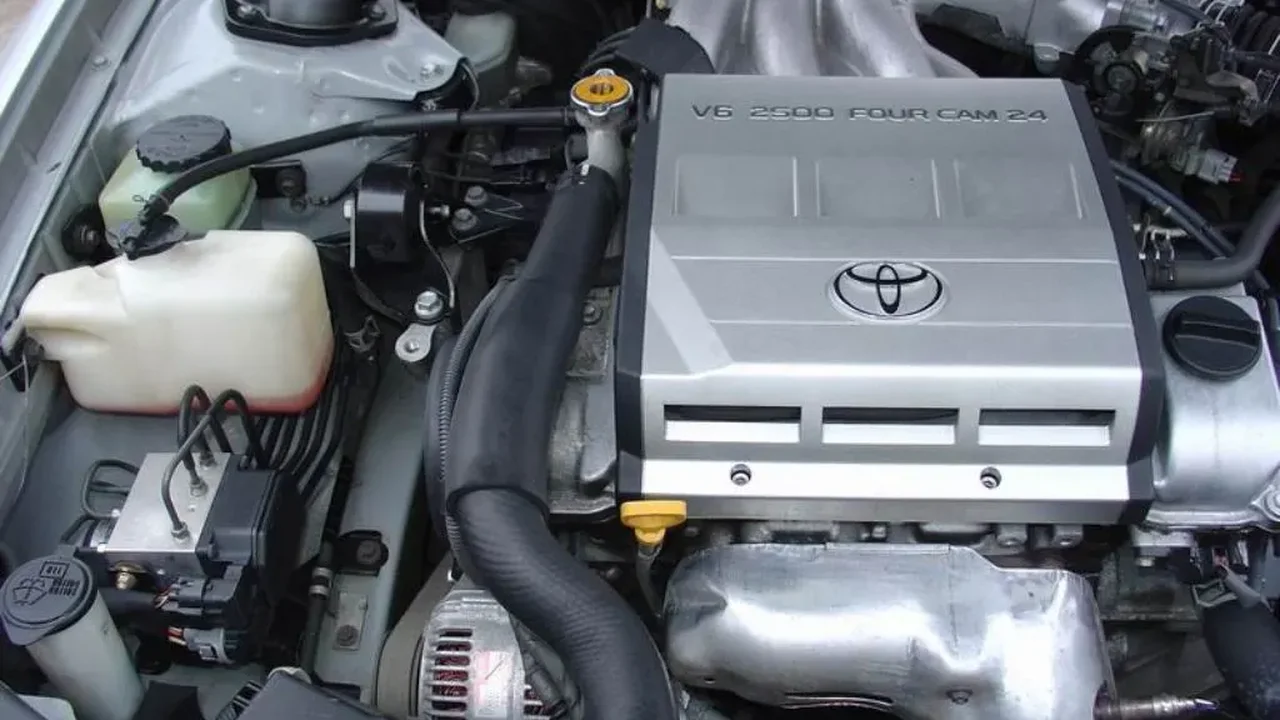The Impact of Altitude on Engine Tuning: Adjusting for Elevation

Altitude significantly affects engine performance Learn how to adjust your tuning parameters to compensate for changes in air density and maintain optimal power output at different elevations Ensure consistent performance in any environment
Understanding Altitude's Effect on Engine Performance Air Density and Power Loss
Okay, so you're cruising up into the mountains, ready to rip some corners or hit the trails. But suddenly, your engine feels…sluggish. What gives? The culprit is likely altitude. As you climb higher, the air gets thinner. This means there's less oxygen available for combustion in your engine. Less oxygen equals less power. It's a simple equation. The higher you go, the less dense the air becomes, and the less power your engine produces. This is because the engine is essentially an air pump, and with less air being pumped in, less fuel can be burned efficiently. This results in a noticeable drop in horsepower and torque. We're talking about a potential power loss of around 3-4% for every 1,000 feet of elevation gain! That's a significant difference, especially if you're trying to set a personal best or compete in a race. The severity of the impact depends on the engine type, with turbocharged engines generally being less affected than naturally aspirated ones, as the turbo can compensate for the thinner air to some extent.
Why Tuning Matters at High Altitude Adjusting Fuel and Ignition Timing
So, what can you do about it? This is where engine tuning comes in. The goal is to compensate for the reduced oxygen by adjusting your engine's parameters. The two main areas to focus on are fuel and ignition timing. At higher altitudes, your engine needs less fuel to maintain the optimal air-fuel ratio (AFR). If you don't adjust the fuel, you'll end up with a rich condition, where there's too much fuel and not enough air. This can lead to poor fuel economy, reduced power, and even engine damage. Ideally, you want to maintain a stoichiometric AFR, which is around 14.7:1 for gasoline engines. This ensures the most efficient combustion and optimal power output. Ignition timing also needs to be adjusted. As the air becomes thinner, the combustion process slows down. To compensate, you need to advance the ignition timing slightly. This means firing the spark plugs a little earlier to ensure complete combustion. However, be careful not to advance the timing too much, as this can lead to detonation, also known as engine knock, which can be very damaging. Finding the sweet spot requires careful monitoring and adjustment.
ECU Tuning for Altitude Compensation Mapping Strategies and Tools
The best way to adjust these parameters is through ECU tuning. Your engine's ECU (Engine Control Unit) is basically its brain. It controls various aspects of engine operation, including fuel delivery and ignition timing. By remapping the ECU, you can optimize these parameters for different altitudes. There are several ways to do this. One option is to use a standalone ECU, which replaces the factory ECU entirely. This gives you complete control over all engine parameters. However, it's also the most complex and expensive option. Another option is to use a piggyback ECU, which intercepts and modifies the signals from the factory ECU. This is a simpler and more affordable option, but it may not offer as much control. Finally, you can also use a flash tuner, which allows you to reflash the factory ECU with a custom map. This is a good compromise between cost and control. The specific tuning strategy will depend on your vehicle, your goals, and your budget. No matter which method you choose, it's crucial to have the right tools and knowledge. A wideband O2 sensor is essential for monitoring the AFR. A data logger is also helpful for recording engine parameters and analyzing performance. And of course, you'll need the appropriate software and cables to connect to your ECU.
Product Recommendations for Altitude Tuning Standalone ECUs Piggyback Systems and Flash Tuners
Let's dive into some specific product recommendations to help you conquer those high-altitude driving challenges. We'll look at standalone ECUs, piggyback systems, and flash tuners, considering their features, ease of use, and price points.
Standalone ECUs
These are the top-of-the-line options, offering unparalleled control and customization. However, they require significant tuning knowledge and are best suited for experienced users.
- Haltech Elite Series: This is a popular choice for high-performance applications. It offers advanced features like traction control, launch control, and boost control. It supports a wide range of engines and sensors, and it's known for its user-friendly software. Price: $1,500 - $3,000 depending on the model.
- AEM Infinity Series: Another excellent option, the AEM Infinity offers similar features to the Haltech Elite series. It's known for its robust data logging capabilities and its advanced tuning algorithms. Price: $1,800 - $3,500 depending on the model.
Piggyback ECUs
These are a more affordable and easier-to-install option. They work by intercepting and modifying the signals from the factory ECU. While they don't offer as much control as standalone ECUs, they can still provide significant performance gains.
- Cobb Accessport: This is a popular choice for Subaru and Mazda vehicles. It allows you to flash pre-tuned maps onto your factory ECU, and it also offers data logging and monitoring capabilities. It's relatively easy to use and offers a good balance of performance and price. Price: $650 - $800 depending on the vehicle.
- JB4: This is a popular piggyback ECU for BMW vehicles. It offers similar features to the Cobb Accessport, including pre-tuned maps, data logging, and monitoring. It's also known for its ease of installation. Price: $500 - $600.
Flash Tuners
These devices allow you to reflash your factory ECU with a custom tune. They offer a good compromise between cost and control, and they're often a good choice for users who want to customize their tuning but don't want to deal with the complexity of a standalone ECU.
- HP Tuners MPVI2: This is a versatile flash tuner that supports a wide range of vehicles, including GM, Ford, and Chrysler. It allows you to read and modify your factory ECU's calibration data, and it also offers data logging and scanning capabilities. Price: $400 - $500 for the device, plus additional credits for each vehicle you tune.
- SCT X4: Another popular flash tuner, the SCT X4 supports Ford and GM vehicles. It offers similar features to the HP Tuners MPVI2, including custom tuning, data logging, and scanning. Price: $400 - $500 depending on the vehicle.
Real-World Scenarios and Tuning Examples Mountain Roads Off-Roading and Track Days
Let's illustrate how altitude tuning applies to different driving scenarios.
Mountain Roads
Imagine you're driving a naturally aspirated sports car on a winding mountain road. As you climb higher, you notice a significant power loss. To compensate, you would want to lean out the fuel mixture and advance the ignition timing. This will help to restore some of the lost power and improve throttle response. You might also consider using a higher octane fuel to prevent detonation.
Off-Roading
If you're off-roading in a high-altitude environment, you'll want to focus on maintaining consistent power delivery. This means adjusting the fuel and ignition timing to compensate for the changing air density. You might also consider using a boost controller to maintain consistent boost pressure in a turbocharged engine. In addition, proper tire pressure and suspension setup are crucial for optimal off-road performance at altitude.
Track Days
For track days at high altitude, you'll want to optimize your engine for maximum power and cooling. This means carefully tuning the fuel and ignition timing, as well as upgrading your cooling system to prevent overheating. You might also consider using a lightweight flywheel to improve throttle response. Remember to continuously monitor your engine parameters and make adjustments as needed.
Comparing Tuning Approaches NA vs Turbocharged Engines at Altitude
The approach to altitude tuning differs significantly between naturally aspirated (NA) and turbocharged engines.
Naturally Aspirated Engines
With NA engines, you're directly affected by the air density. Tuning primarily involves adjusting fuel and ignition timing to compensate for the reduced oxygen. The goal is to maintain the optimal AFR and prevent detonation. Since you can't increase the amount of air entering the engine, the focus is on optimizing the combustion process with the available air.
Turbocharged Engines
Turbocharged engines have an advantage at altitude because the turbocharger can compensate for the thinner air. However, tuning is still necessary to optimize performance and prevent issues like overboosting. Tuning involves adjusting boost pressure, fuel, and ignition timing. The goal is to maintain consistent boost pressure and AFR, and to prevent detonation. You might also need to adjust the wastegate settings to prevent overboosting at high altitude.
Essential Tools and Equipment for Altitude Tuning Wideband O2 Sensors Data Loggers and More
To effectively tune your engine for altitude, you'll need the right tools and equipment.
- Wideband O2 Sensor: This is essential for monitoring the AFR. It provides real-time feedback on the air-fuel mixture, allowing you to make precise tuning adjustments.
- Data Logger: A data logger records engine parameters like RPM, manifold pressure, and temperature. This data can be analyzed to identify areas for improvement and fine-tune your engine.
- OBD2 Scanner: An OBD2 scanner can read diagnostic trouble codes (DTCs) and monitor engine parameters. This can help you diagnose and troubleshoot engine problems.
- Laptop with Tuning Software: You'll need a laptop with the appropriate tuning software to connect to your ECU and make adjustments.
Safety Precautions and Best Practices for Altitude Tuning Avoiding Detonation and Engine Damage
Tuning your engine for altitude can be beneficial, but it's crucial to prioritize safety and avoid engine damage.
- Monitor AFR Carefully: Always monitor the AFR to ensure that your engine is running within safe limits. A lean condition can lead to detonation and engine damage.
- Avoid Detonation: Detonation is a serious threat to engine health. Listen for signs of detonation and adjust the tuning parameters accordingly.
- Start with Conservative Tuning: When tuning for altitude, start with conservative adjustments and gradually increase the tuning parameters.
- Consult a Professional: If you're not comfortable tuning your engine yourself, consult a professional tuner.
Conclusion Alternative
So, there you have it. Tuning for altitude can be a bit tricky, but with the right knowledge, tools, and precautions, you can keep your engine running strong no matter how high you climb. Remember to always prioritize safety and consult a professional if you're unsure about anything. Happy tuning!
:max_bytes(150000):strip_icc()/277019-baked-pork-chops-with-cream-of-mushroom-soup-DDMFS-beauty-4x3-BG-7505-5762b731cf30447d9cbbbbbf387beafa.jpg)






